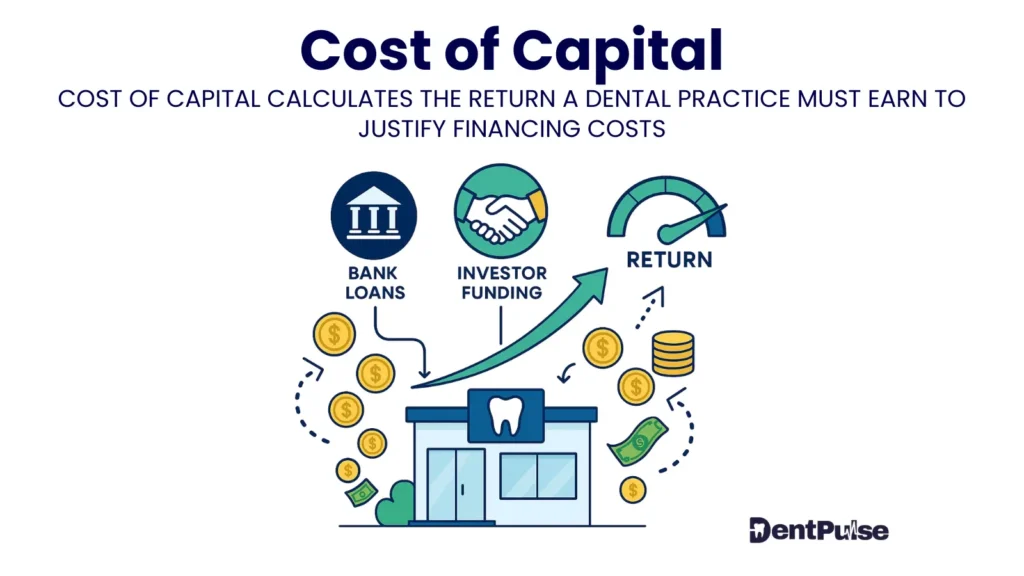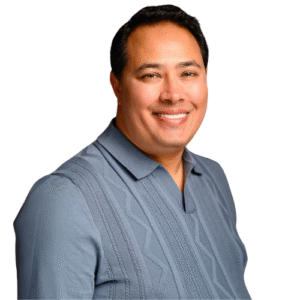What Is Cost of Capital in a Dental Practice?
Cost of capital is the minimum return a dental practice must generate to justify the money it has invested or borrowed.
It represents the “price of funding” your practice — whether through bank loans, investor money, or retained earnings.
Why Cost of Capital Matters for Dental Practice Owners
Every pound in your practice has a cost attached to it:
- Borrowed money (bank loans, overdrafts, equipment finance) → comes with interest payments
- Equity (your own money or investor capital) → comes with the expectation of a return greater than leaving it in savings or other investments
If your practice generates less than its cost of capital, you are effectively destroying value, even if revenue is growing.
Example:
- £200,000 bank loan at 6% interest = £12,000 annual cost
- If the practice reinvests that loan into a new surgery and only generates £8,000 net profit, the return is below the cost of capital → the investment is loss-making.
Components of Cost of Capital
| Component | Description |
| Debt Cost | Interest paid on loans, overdrafts, and equipment leases |
| Equity Cost | Expected return for practice owners or investors |
| Weighted Average Cost of Capital (WACC) | Blends debt + equity costs into one overall measure |
How DentPulse Tracks Cost of Capital
| Feature | Function |
| Debt Integration | Pulls interest costs from loan and lease schedules |
| Equity Benchmarking | Shows return required on owner capital invested |
| Scenario Planning | Models whether financing projects (new chair, CBCT, practice acquisition) exceed cost of capital |
| OWS™ Overlay | Connects capital costs to long-term Owner Wealth Score |
DentPulse makes it clear whether financing decisions are value-creating or value-destroying.
DentPulse Tip™
“Revenue growth is meaningless if it doesn’t beat your cost of capital.
Always measure your return against the true cost of funding.”
Related Glossary Terms
- Debt Financing – Borrowed money with interest obligations
- Equity – Owner or investor capital
- Weighted Average Cost of Capital (WACC) – Combined funding cost
- Return on Investment (ROI) – Profit compared against cost of capital
- Practice Acquisition – High-stakes investment where cost of capital must be modelled
Glossary Summary Table
| Term | Meaning |
| Cost of Capital | The required return to justify practice funding (debt or equity) |
| Purpose | Ensure investments generate more than their financing cost |
| DentPulse Advantage | Models debt + equity returns automatically in scenario planning |




